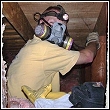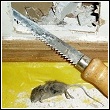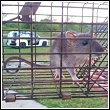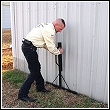Rat Control
The Norway and roof rat are the two most common kind of rats to bother homeowners in Southwest Florida. A third species, the wood rat (also known as a pack rat) can be found in the northern half of Florida but is seldom seen in the southwestern portion of the state.
Rats can carry disease and present a health and safety hazard to your family and pets. Of all the wildlife species that we handle, rats are the toughest, smartest and most frustrating, but also one of the most rewarding for us to remove. We know how to solve your rat problem.
If you are in Cape Coral, Fort Myers, Pine Island, Boca Grande or another community in Southwest Florida, and are having or want to prevent rat problems - please give us a call to find out how we can help.
Getting Rid Of Rats
Rat problems can quickly grow out of hand - prompt removal utilizing effective and safe rat control methods, exclusion, and preventative steps will all be key when it comes to controlling rats around your home.
The two most common kind of rat problems we see in Cape Coral are those created by roof and Norway rats. roof rats are usually black or grey in color, tend to be mistaken for mice sometimes and are fond of nesting in high places such as attics, trees, ceilings and roof lines. Norway rats, also called brown rats, prefer ground level activities and favor burrows for nesting. The rat in the photo below is a Norway rat.
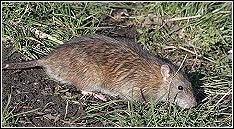
The burrow openings created by Norway rats are usually about 2 - 3" in diameter and tend to be close to an area leading "under" something such as next to the foundation of a building or shed. The travel path being used by the rats will usually be smoothed out by activity.
Rat burrows tend to have a main entrance and then additional exit holes to give the rats more escape options should that become necessary. The extra escape holes are often hidden by dirt or foliage, less traveled and are not as easy to spot as the main entrance.
Crawdad holes are close in size and are sometimes mistaken for rat holes, but those will usually be out in the open with mud piled high around them. A rat hole will usually be a hole in the ground with little to no dirt piled around it. If the hole is larger than 3" or 4" it is more likely that it was made by a skunk or fox, than it was by a rat.
Norway rats are nocturnal and will often invade homes looking for food and water sources and then return later to their burrows. In other words, you may think they are living outside when in fact they are coming in on a nightly basis while you sleep.
When Norway rats decide to take up residence in a building it is most often in a basement or crawl space, but that doesn't mean they can't be found in attics or upper level rooms.
Even though roof rats tend to favor nesting in high places, and Norway rats at or below ground level, both species can be found in attics or burrows, particularly as populations grow and more nesting sites are required. So where they nest isn't always going to be an indicator of what kind of rat it is that you are dealing with.
You can learn more about the differences between Norway and Roof rats on our page about Roof Rats.
Also on the page about roof rats, you will find a diagram showing how the two species differ in physical characteristics - which can be helpful for identification purposes.
When it comes to removing rats from your home, it is important to understand that rat home invasions leave behind pheromones, urine and feces. This will now make your building a magnet for additional rats to be attracted to... perhaps not today or next week, but next month or two years down the road - the attractant will remain and they will be back.
Our services are comprehensive, we can remove the rats, make the necessary modifications to keep them from getting back in, and eliminate or greatly reduce the damage and wildlife attracting scents left behind.
The Problem With Trapping and Poisons
Many wildlife and pest control companies utilize trapping and poisons to exterminate rats, however there are problems with these techniques. They are often ineffective and there is much more to getting rid of rats than these methods cover.
Poisoning rats is not the answer – somebody WILL lose. Rats may consume the poison, die in your walls or attic and smell so bad that you have to move into a hotel. They can also die under your deck or hot tub. What happens when your dog or cat, or the neighbor's pet eats the poisoned rat? With poison, somebody will always lose. We have seen countless bad situations caused by rat poison and secondary poisoning.
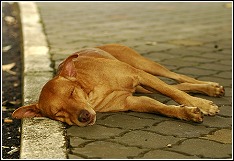
Rats are neophobic, which means they are scared of new objects such as a rat trap, making them one of the most difficult animals to trap, followed by armadillos and skunks.
Rats are just like skunks in that these extremely smart rodents will dig one foot down, one foot across, and one foot back up to get under a building's foundation. They are cunning and know how to invade your home.
Rats may be smart, but we can get rid of rats for good via time proven techniques. Trapping and poison are a temporary fix, but we offer lasting solutions for getting rid of your rat problems for good.
Elimination The Wildlife Whisperer Way
We approach rat control with several important steps. First, we will be inspecting for burrows, runways, droppings, urine stains, greasy looking marks, tracks, odors, food remains and gnaw marks.
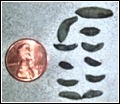
Second, and most important, we will start altering your building to make certain that rats cannot get inside ever again.
If you have rats in your building, you don't have a rat problem - you have a building problem. We fix this type of problem every day. We can trap rats for you all year long, but that will not solve your problem. What good does it do to continuously trap an overabundant, automatically replenishing commodity? Our competition may attempt to impress upon you that trapping is the right thing to do... but typically all trapping does is take money from your pocket, and place it in theirs. We do not believe that is the right way to do business – we provide lasting solutions.
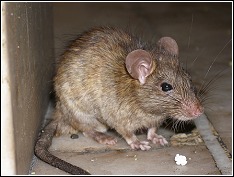
We can exclude all rats, including roof rats and Norway rats – forever. Rats are very smart animals. Some of the most difficult and time consuming exclusions we perform include rats. Depending on how you want to proceed depends on if you want to just take care of the current problem, or if you want to take care of it for good so that you do not have to deal with it again. Do you want it done, or done right the first time?
Trapping Rats And Using Mouse Traps
The Wildlife Whisperer, Inc. does not advocate needless trapping. Our humane wildlife control methods work best with wildlife that occasionally exits the home. But, rodents are often inside your home to stay, especially if they have a plentiful food source such as your pet’s food. At such times rodent traps are often mandated. We’ve put together a comprehensive look at some of the different non-lethal live-catch rodent traps available today and how to use them effectively.
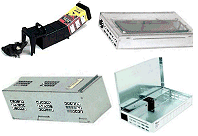
Keeping Rats Away - Prevention & Exclusion
Once you have them, rats can be difficult to get rid of, making prevention itself one of the best rat control methods. When you do find yourself faced with rat problems, it will be important to make the proper modifications to your property to exclude them for good. The Wildlife Whisperer, Inc. team has the knowledge necessary to help you effectively prevent, remove and exclude rats. We can also clean up the mess they leave behind.
Prevention
Stop feeding the wildlife. A rat must have a constant, free food source to survive in town. If you are feeding the birds, stop. If you are feeding the squirrels, stop. If you are feeding your pets outside, quit. Ask your neighbors to do the same. The bottom line - A Norway rat cannot survive in most urban environments without a constant free food source. Discontinue feeding the birds! Discontinue feeding pets outdoors!
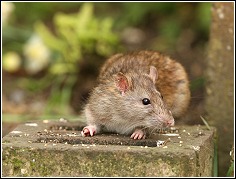
Many folks think that if they get rats, they are not good housekeepers; this is not always the case. Even a "clean" home can be appealing to rats if other important prevention techniques are not employed. For instance, always pick up any rubbish lying around, close garbage can lids tight, keep brush around the house to a minimum, and keep the lawn mowed. Encourage the neighbors to do the same. These rat prevention practices can go a long way when it comes to controlling rats.

Exclusion
Making it impossible or very difficult for rats and other wild animals to re-enter a structure is called exclusion. This is a humane, cost effective method offering lasting nuisance wildlife control results.
Fun Facts About Rats
- Rats are afraid of new things. This behavior is referred to as being “neophobic.” Mice are not afraid of new things.
- Seeing rats during daylight hours means that a high population is nearby.
- Norway Rats, Roof Rats and mice often live close to humans because we inadvertently provide them with food. Because of this, these rodents are called "commensal" rodents.
- A mating pair of rats can have 5 litters of 7-15 baby rats a year.
- Baby rats become fertile after just 5 weeks old.
- Rats do not typically live to the age of 2 in the wild.
- Rats' front teeth grow 4.5" to 5.5" each year.
- A rat can tread water for 3 days.
- Rats will eat dog feces and their own feces for the nutritional value.
- Rats can fall 50 feet and land unharmed.
- Rats do not sweat.
1242 SW Pine Island Rd., Suite 310
Cape Coral, Florida 33991-2126
help@totalwildlifecontrol.com




